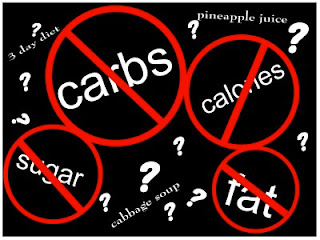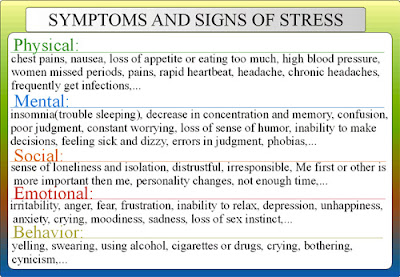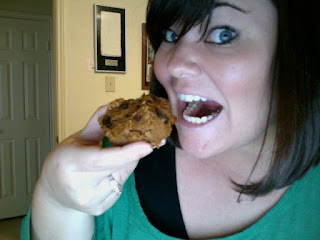Nutrition Myths PLUS my recipes
The more I work on finding and trying tons of healthy foods and recipes the more I wonder what is really healthy and what is just a myth or marketing ploy?
These are a few things found online that had research and trusted credits to back it up that I thought were interesting.
1. EGGS: Eggs do contain a lot of cholesterol but you don't need to totally cut them from your diet just eat them in moderation. No more than 2 eggs per week for women according to the American Heart Association.
2. CARBS: There’s no question that loading up on sugary and refined-carbohydrate-rich foods, such as white bread, pasta and doughnuts, can raise your risk of developing health problems like heart disease and diabetes. But if you cut out so-called “good-carb” foods, such as whole grains, beans, fruits and vegetables, you’re missing out on your body’s main source of fuel as well as vital nutrients and fiber. What’s more, for many people, a low-carb diet may be harder to stick with in the long run.
3. RAW FOOD: It’s true that heating a food above 118°F inactivates plant enzymes, “since enzymes are proteins and proteins denature with heat! But those enzymes are denatured—and thus inactivated—when they reach our stomachs. Our stomach acids are designed to break down proteins very efficiently. If associated with living microorganisms plant enzymes might reach the small intestine intact but their overall contribution to human digestion appears minimal. Those enzymes are made for the survival of plants; for human health, they are not essential.
4. EATING AT NIGHT: Calories are calories are calories, and it doesn’t matter what time you eat them. What matters are the total calories you take in.
5. SEVERAL SMALL MEALS:
I find the main moral is no food is bad food really you just need to be careful and eat in moderation.
Now for some recipe shares
I didn't take a photo of this product finished but I made a curried carrot soup by blending chicken stock, roasted carrots, some ginger, and green curry paste. MMM
These are a few things found online that had research and trusted credits to back it up that I thought were interesting.
1. EGGS: Eggs do contain a lot of cholesterol but you don't need to totally cut them from your diet just eat them in moderation. No more than 2 eggs per week for women according to the American Heart Association.
2. CARBS: There’s no question that loading up on sugary and refined-carbohydrate-rich foods, such as white bread, pasta and doughnuts, can raise your risk of developing health problems like heart disease and diabetes. But if you cut out so-called “good-carb” foods, such as whole grains, beans, fruits and vegetables, you’re missing out on your body’s main source of fuel as well as vital nutrients and fiber. What’s more, for many people, a low-carb diet may be harder to stick with in the long run.
3. RAW FOOD: It’s true that heating a food above 118°F inactivates plant enzymes, “since enzymes are proteins and proteins denature with heat! But those enzymes are denatured—and thus inactivated—when they reach our stomachs. Our stomach acids are designed to break down proteins very efficiently. If associated with living microorganisms plant enzymes might reach the small intestine intact but their overall contribution to human digestion appears minimal. Those enzymes are made for the survival of plants; for human health, they are not essential.
4. EATING AT NIGHT: Calories are calories are calories, and it doesn’t matter what time you eat them. What matters are the total calories you take in.
5. SEVERAL SMALL MEALS:
“Grazing on mini meals throughout the day keeps your metabolism stoked and helps you control your weight
better than eating fewer, larger meals.”
Our metabolisms rev up slightly each time we eat, as our bodies process what we’ve consumed. So by having many mini meals instead of fewer, larger ones, we shift our metabolism into a higher gear more often—and burn a few more calories. But “the calorie difference is so small it doesn’t add up to a hill of beans,” says John Foreyt, Ph.D., director of the Behavioral Medicine Research Center at Baylor College of Medicine in Houston. That said, snacking between meals may help some dieters by keeping them from getting overly hungry and eating too many calories when they finally sit down to dinner. But probably for just as many others, “each meal is an opportunity to lose control,” says Foreyt. Bottom line: Choose the eating pattern that works best for you.
6. WATER: You should replace water lost through breathing, excrement and sweating each day - but that doesn't necessarily total 64 ounces of water. It's hard to measure the exact amount of water you have consumed daily in food and drink, but if your urine is pale yellow, you're doing a good job. If it's a darker yellow, drink more H2O.
7. PROTEIN: Contrary to claims of some protein supplement companies, consuming extra protein does nothing to bulk up muscle unless you are also doing significant weight training at the same time. Even then the increased requirement can easily come from food. A potential problem with supplements is the body has to work overtime to get rid of excess protein, and can become distressed as a result.
8. ALCOHOL: Again, moderation is key. Six ounces of wine and 12 ounces of beer are considered moderate amounts, and should not pose any adverse health effects to the average healthy adult. All alcohol is an anticoagulant and red wine also contains antioxidants, so drinking a small amount daily can be beneficial.
9. POST WORKOUT EATING: Endurance athletes need to take in carbohydrates immediately after a workout to replace glycogen stores, and a small amount of protein with the drink enhances the effect. Drinking low-fat chocolate milk or a carbohydrate drink, like Gatorade, is better for the body, as they replace glycogen stores lost during exercise. Protein is not going to help build muscle, so strength athletes do not need to eat immediately following their workout.
10. VITAMINS: If you eat a variety of fruits, vegetables, and whole grains, along with moderate amounts of a variety of low-fat dairy and protein and the right quantity of calories, you don't need to supplement. Most Americans do not, so a multi-vitamin might be good. Special vitamin supplements are also recommended for people who are pregnant or have nutritional disorders.
I find the main moral is no food is bad food really you just need to be careful and eat in moderation.
Now for some recipe shares
SOUPS
Roasted Red Pepper Soup
- Jar of roasted red peppers
- 99% fat free low sodium chicken broth
- OPTIONAL - shiritake noodles
- OPTIONAL- cilantro and greek yogurt toppings
Blend roasted bell peppers and chicken broth in a blender.
Pour in a pot and let simmer with onions and any spices you want to add
I was dying to try the Shirataki noodles so I added them to my red pepper soup
Top with a dollop of fat free greek yogurt an cilantro
* The shirataki was interesting in texture. It was something to get used to. I still want to eat it as its a great low calorie swap but it may be better with a different sauce than this soup. I didn't take a photo of this product finished but I made a curried carrot soup by blending chicken stock, roasted carrots, some ginger, and green curry paste. MMM
SNACKS
Spray corn tortillas with cooking spray and bake at 350 for about 10-15 minutes
Mix avocado, onions, cilantro, and greek yogurt
Serve! Good way to get some super food avocado and eat some lower calorie chips
Turkey wrapped cream cheese pickle? YUMMM
Take some turkey and put a wedge of laughing cow cream cheese on top and smear it around
Put a pickle spear on top
Roll it up and ENJOY
THIS IS IMPORTANT - you must use claussen its SO important that crunchy awesomeness is needed!
EVEN BETTER? Hot and Spicy claussen makes them even more delicious
Low cal low carb wheat tortilla with a little peanut butter, top with a banana, drizzle with a little honey, and put on chia seeds
Wrap and eat. Makes a great snack or breakfast
MAIN COURSES
Chicken and Snow Pea Stir Fry
- 2 Chicken Breasts
- 2/3 cup chopped Onion
- Snow Peas
- Brown Rice
- Brown Sugar
- Rice Vinegar
- Sriracha
- Sesame Oil
- Hoisin Sauce
- Chopped garlic
- Slivered Almonds
- Green onions
Saute chicken and onions in a small bit of coconut oil
Add about 1/4 cup of water and snow peas cover and steam the snow peans and let the chicken cook down and get moist
While the chicken is cooking mix together hoisin sauce, garlic, sriracha, sesame oil, rice vinegar, and a small amount of brown sugar.
Once chicken and peas are totally cooked add the sauce and let thicken
Serve over brown rice
Top with chives and slivered almonds
Moroccan Chickpea Stew with Cous Cous
- 2 Chicken breasts
- 1 can chickpeas
- 1 can crushed tomatoes
- cinnamon
- cumin
- cayenne
- curry powder
- onions
- whole wheat cous cous
Cut chicken breasts into bite size pieces. Coat in cinnamon, cumin, cayenne, and curry powder then brown in skillet with coconut oil. Add diced onions and cook until softened. Add the can of crushed tomatoes plus a can of water and the can of chickpeas. Cover and let cook for about 30 minutes so spices marry and chickpeas get soft.
Serve over wheat cous cous!



























Comments
Post a Comment